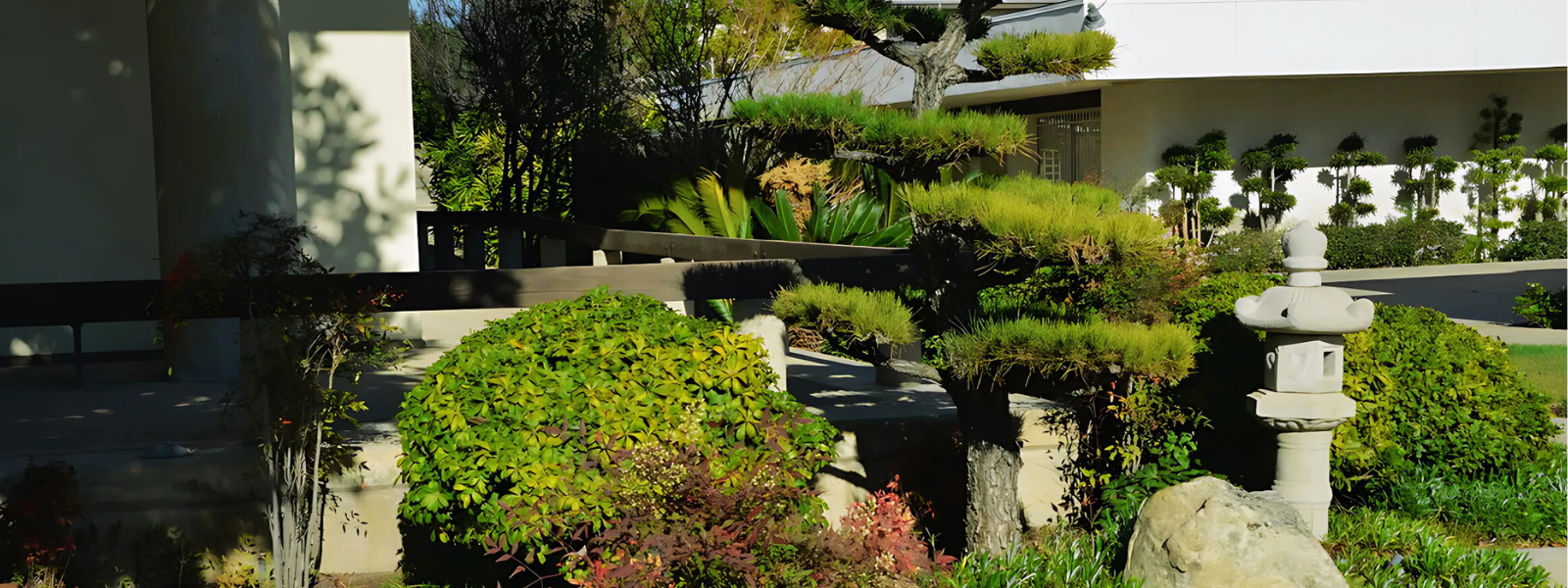Dharma Seeds
As we transition from autumn to winter, the days have become noticeably shorter. Even here in Southern California, changes are visible in the vegetation as it cycles through life, dormancy, or a return to the earth where it will contribute to new growth.
Similarly, our life process is cyclical on layered levels. At the temple, preparations for mochitsuki signal the coming of the New Year, and before we know it, we are progressing through Spring Equinox Ohigan, Hanamatsuri (Shakyamuni Buddha’s birthday), Obon, Autumn Equinox Ohigan and back again. Students develop and mature through one grade after another, while some of us gain more wrinkles and pounds and lose more hair as one season merges into the next.
In our teaching, we do not regard life and death as a linear path with a beginning and an end. Given the interconnectedness of all things, we arise like a wave in the ocean and eventually disappear into that ocean again. When water evaporates, it may become part of the clouds that then produce rain, allowing many lives to flourish. Those lives in turn contribute directly or indirectly to the existence of everything else, and so on. All that we do touches others in countless ways, just as each of us is formed by the ever-changing assemblage of infinite life that is our ocean. Therefore, though everything arises from this place, nothing remains exactly the same due to varying causes and conditions.
Rev. Kenryu Tsuji describes the process of cosmic energy, the life force, this way:
A blade of grass at my feet turns brown with the changing seasons and withers away in the cold night. But in a real sense it never dies, for the roots nurtured in the rich soil produce another blade one spring morning. This blade is different from its immediate ancestor but similar in many respects because the source of its life is the powerful life giving energy of its spindly but tenuous roots … We call this energy the Infinite Light and Life of the Universe. [K. Tsuji, The Heart of the Buddha-Dharma, 69-70]
In a similar way, our dharma teaching has been shared from one generation to another for almost 2,600 years, through societies that have risen and fallen, and among cultures that encircle our globe. Throughout, it has maintained
its essence but adapted so that it continues to thrive and nourish others.
The teaching of the Buddha reached American soil well over a century ago with Asian immigrants. Later, it started to take hold with other Americans when it was offered in ways that resonated with them. Today, this tradition is attracting ever-growing interest, including, in particular, among younger adults, according to the eminent Pew Forum Research. However, we know that this is not reflective of the Jodo Shinshu tradition in America so we must ask ourselves why. The reasons are numerous and some challenges are shared by other religious institutions as well, but the underlying cause is often resistance to change. We, of all people, should know this. One of the pillars of our teaching is impermanence. Simply put, all things change. The dharma is the dharma, but the way we share it must be adapted to its surroundings that are themselves constantly changing.
Our teaching is too beneficial to keep to ourselves. It has given people a sense of peace, security, and even empowerment through the centuries. We often speak of passing something like this along to subsequent generations but in these fraught times, isn’t also imperative that we open the dharma doors to all who seek the path of wisdom and compassion? Like many times in the past, in other places and other eras, humankind is at another major turning point. Each of us must reflect, and open our minds to skillful view and action.
The seeds of the dharma have been planted in rich American soil. Our conditions are different from those of India, or China, or Japan. Let us nurture those seeds in the way that allows them to grow best here. Rev. Tsuji continues, “The Buddhist way of life is not to fight the currents and rapids of life but to move in harmony with the eternal flow of cosmic energy. This is the life of Nembutsu.”
As another year ends and a new one waits around the corner, may I express my deep gratitude to all of you for your constant dedication and support. I wish you peace, joy, and good health always. Namo Amida Butsu.
In gassho,
Rev. Patricia Usuki

